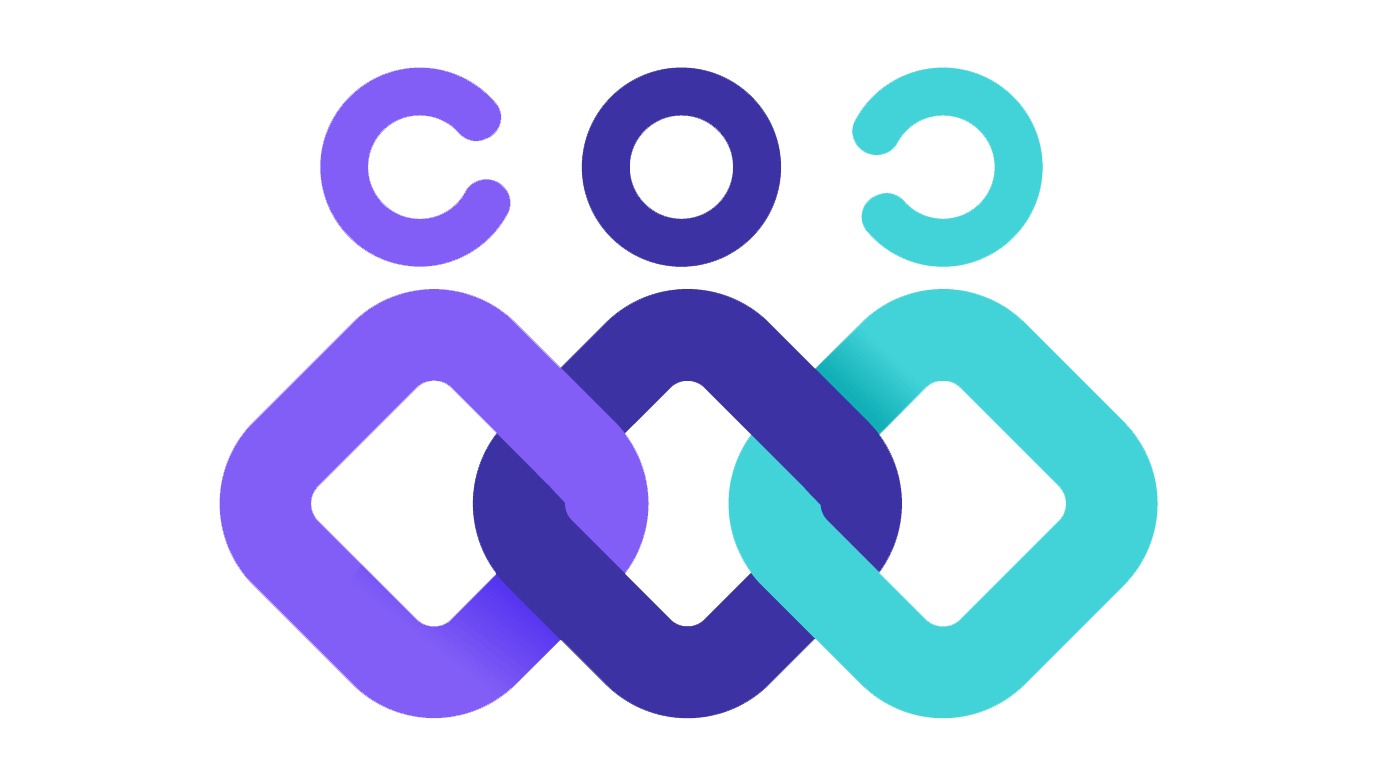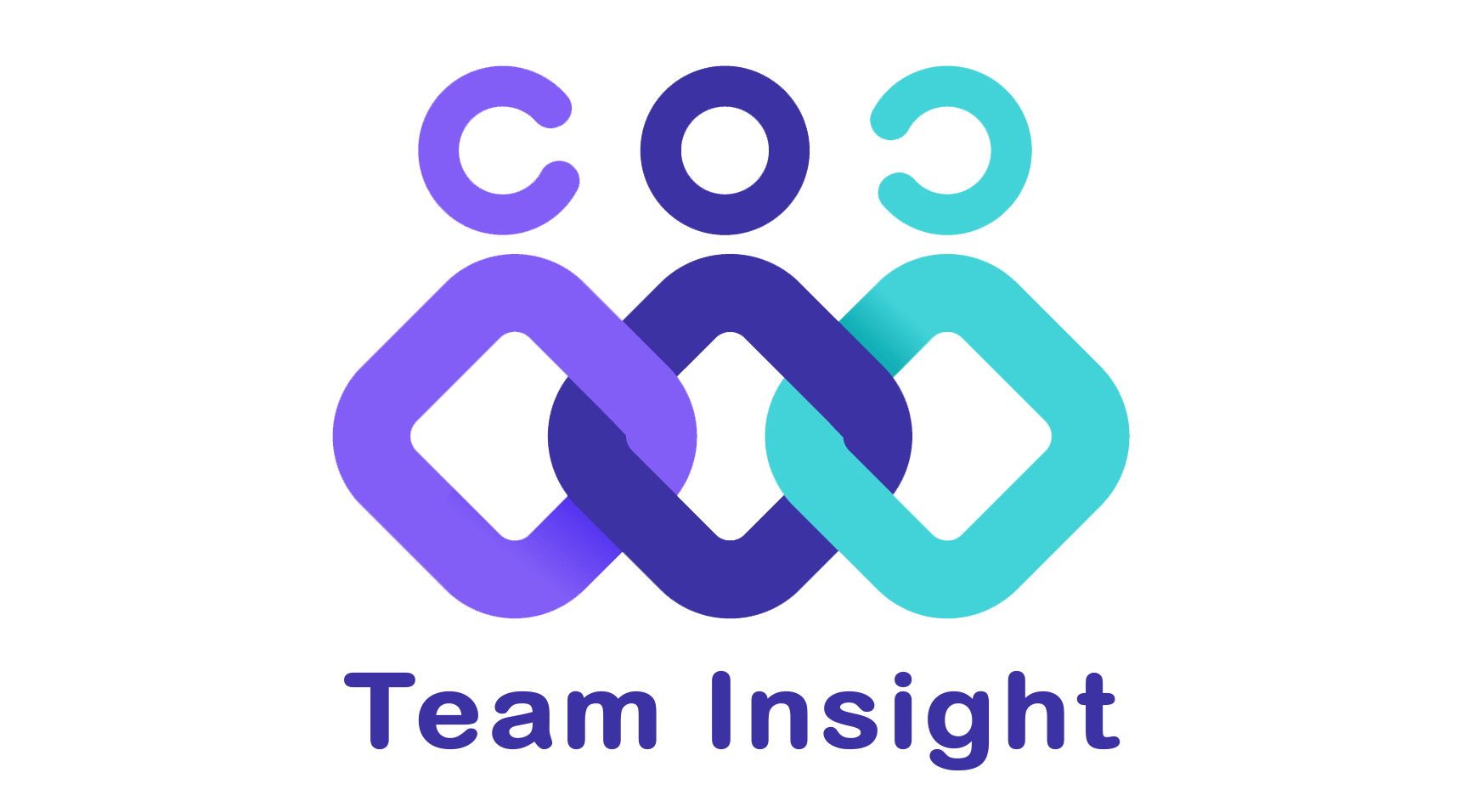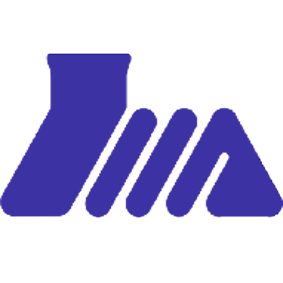- Home
- Product
-
Product Overview
Team Insight combines performance management, recognition, and local rewards in a single loop — so teams grow fairly, stay engaged, and feel valued.
PRODUCT
Employee Performance Management Software
Tools to improve performance and growth tracking.
Employee Recognition & Rewards Software
Build positivity by valuing daily wins.
Employee Engagement Software for SMEs
Drive productivity with clear access and accurate tracking.
OKR & KPI Software for Small Teams
Tools to improve performance and growth tracking.
-
- Resources
- Capture leads and make buying easySed ut perspiciatis unde omnis iste natus error sit voluptatem accusantium doloremque laudantium, totam aperiam, eaquecy epsa abillo inventore veritatis architecto beatae
- Complete documentation
- Working materials in Figma
- 100GB cloud storage
- 500 team members
- Complete documentation
- Working materials in Figma
- 100GB cloud storage
- 500 team members
 Capture leads and make buying easySed ut perspiciatis unde omnis iste natus error sit voluptatem accusantium doloremque laudantium, totam aperiam, eaquecy epsa abillo inventore veritatis architecto beatae
Capture leads and make buying easySed ut perspiciatis unde omnis iste natus error sit voluptatem accusantium doloremque laudantium, totam aperiam, eaquecy epsa abillo inventore veritatis architecto beatae- Complete documentation
- Working materials in Figma
- 100GB cloud storage
- 500 team members
- Complete documentation
- Working materials in Figma
- 100GB cloud storage
- 500 team members
Capture leads and make buying easySed ut perspiciatis unde omnis iste natus error sit voluptatem accusantium doloremque laudantium, totam aperiam, eaquecy epsa abillo inventore veritatis architecto beatae- Complete documentation
- Working materials in Figma
- 100GB cloud storage
- 500 team members
- Complete documentation
- Working materials in Figma
- 100GB cloud storage
- 500 team members
 Capture leads and make buying easySed ut perspiciatis unde omnis iste natus error sit voluptatem accusantium doloremque laudantium, totam aperiam, eaquecy epsa abillo inventore veritatis architecto beatae
Capture leads and make buying easySed ut perspiciatis unde omnis iste natus error sit voluptatem accusantium doloremque laudantium, totam aperiam, eaquecy epsa abillo inventore veritatis architecto beatae- Complete documentation
- Working materials in Figma
- 100GB cloud storage
- 500 team members
Latest Product Updates
Strong Signals
Accelerate Your Monitoring Efforts with ‘Team Insight,’ an AI-Powered Solution.
Smart Ideation
Enhance Your Creative Process with GenAI-Powered Ideation.
Knowledge Hub: Articles, Webinars...Explore our blog, webinars, and case studies to stay informed. Visit the Help Center for all the resources you needContent summary: Discover insights and expert advice through our blog to stay updated with the latest trends and solutions.
Discover insights and expert advice through our blog to stay updated with the latest trends and solutions.
Join our webinars for expert-led discussions and real-time learning from industry leaders.

Explore our case studies to see how our solutions drive success in real-world scenarios.

Visit our Help Center for quick answers, resources, and support to assist you every step of the way.
Articles, Webinars...
Explore our blog, webinars, and case studies to stay informed. Visit the Help Center for all the resources you need
RESOURCES
Blog Articles
Discover insights and expert advice through our blog
Webinars
Join our webinars discussions and learning from industry leaders.
CaseStudies
Explore our case studies
Help Center
Visit our Help Center for quick answers, resources.
-
- Success Stories
- Login
- Pricing
- Our Team
- Company
-
A Story of Growth, Trust, and Vision
Our journey is built on a commitment to empowering people and increasing employee productivity. By fostering trust and innovation, we aim to create a work environment where growth and success go hand in hand.
About Us: A team driven by innovation, focused on growth and productivity.
A team driven by innovation, focused on growth and productivity.
Contact us with any questions or feedback. Let’s boost productivity together.
A Story of Growth...
Our journey is built on a commitment to empowering people and increasing employee productivity. By fostering trust and innovation, we aim to create a work environment where growth and success go hand in hand.
ABOUT OUR COMPANY
About Us
A team driven by innovation, focused on growth and productivity.
Contact Us
Contact us with any questions or feedback. Let’s boost productivity together.
-
- Home temp

Why a Minimal HR Stack Matters for Small Businesses
For many small businesses, managing employee performance and engagement efficiently can feel overwhelming. This is where a well-planned HR tech stack for small business performance becomes critical. Unlike large enterprises that can invest in multiple complex systems, small businesses need a minimal set of tools that deliver maximum impact.
A streamlined HR tech stack for small business performance helps managers track goals, monitor employee feedback, and maintain engagement without unnecessary complexity. By focusing on essential functionalities—like performance reviews, pulse surveys, and recognition programs—small teams can save time and reduce costs.
Moreover, a thoughtfully selected HR tech stack for small business performance can scale with the business, avoiding the frustration of switching platforms as the team grows. Instead of juggling multiple apps that don’t communicate with each other, small businesses benefit from a cohesive, easy-to-use stack that keeps HR processes simple and effective.
Investing in the right HR tech stack for small business performance ensures that even with limited resources, teams remain productive, motivated, and aligned with company goals.
Challenges of HR in Small Businesses and How a Minimal HR Stack Helps
Small businesses often face unique HR challenges that larger companies may not encounter. Limited resources, small HR teams, and lack of time can make managing performance and engagement difficult. Many small business owners find themselves juggling spreadsheets, emails, and multiple disconnected tools, which leads to inefficiencies and confusion.
Implementing a thoughtfully chosen HR tech stack for small business performance can address these challenges effectively. By focusing on essential tools, small businesses can simplify performance tracking, employee feedback collection, and recognition programs without adding unnecessary complexity. For instance, a single platform that supports goal setting, performance reviews, and pulse surveys can replace several separate apps, saving time and reducing the risk of errors.
Another common challenge is maintaining engagement across a small team. With a minimal HR tech stack for small business performance, managers can monitor employee sentiment, identify issues early, and take action to boost morale. This ensures that even small teams remain motivated, aligned with business goals, and productive.
Cost is also a critical factor. Small businesses cannot afford expensive enterprise-level software with features they will rarely use. A minimal HR tech stack for small business performance allows companies to invest in exactly what they need, keeping costs under control while still improving efficiency.
Finally, flexibility and scalability are key. A minimal HR stack can grow with the business, integrating new features or users as needed without overwhelming the HR team. For small businesses, adopting a HR tech stack for small business performance is not just about technology—it’s about creating a sustainable, efficient, and effective HR workflow that supports both employees and management.
Essential Tools for Employee Performance Management
Managing employee performance effectively is a cornerstone of any successful business. For small businesses, selecting the right tools is critical to ensure productivity without overwhelming limited HR resources. A carefully chosen HR tech stack for small business performance can streamline goal setting, performance reviews, and continuous feedback, all while saving time and reducing administrative burden.
Goal-setting tools are a must-have in any HR tech stack for small business performance. They allow managers and employees to align objectives, track progress, and measure outcomes consistently. With a centralized system, small businesses can monitor individual and team performance, identify top performers, and address areas for improvement promptly.
Performance reviews are another essential component. A minimal HR tech stack for small business performance often includes automated review scheduling, standardized evaluation templates, and real-time feedback options. This ensures that performance assessments are fair, consistent, and actionable, even in teams with limited HR staff.
Continuous feedback tools further enhance engagement and productivity. By integrating pulse surveys, one-on-one feedback channels, and recognition features, a well-designed HR tech stack for small business performance helps maintain motivation and address concerns proactively. Small businesses benefit from these tools by reducing turnover, boosting morale, and fostering a culture of transparency.
Moreover, reporting and analytics capabilities in a minimal HR tech stack for small business performance allow managers to make data-driven decisions. Insights into employee performance trends, skill gaps, and engagement metrics enable small businesses to adapt strategies quickly, without needing a dedicated HR analytics team.
In summary, essential performance management tools—goal-setting modules, review systems, feedback channels, and analytics—form the backbone of an effective HR tech stack for small business performance. By focusing on these core components, small businesses can manage performance efficiently, engage employees meaningfully, and scale their HR practices as the team grows.
Employee Engagement and Satisfaction Tools
Employee engagement is a key factor in productivity and retention, even in small businesses. With a thoughtfully selected HR tech stack for small business performance, managers can actively monitor and enhance employee satisfaction while keeping HR processes simple and efficient.
Pulse surveys and feedback tools are essential components of any HR tech stack for small business performance. These tools provide real-time insights into employee sentiment, allowing managers to identify issues early and take corrective actions before they escalate. Small businesses benefit from timely feedback by improving morale, reducing turnover, and fostering a transparent workplace culture.
Recognition and reward systems are another critical element. A minimal HR tech stack for small business performance can automate recognition programs, track achievements, and provide meaningful rewards. This not only boosts motivation but also encourages a culture of appreciation, which is particularly important in smaller teams where every employee’s contribution is significant.
Communication platforms integrated into the HR tech stack for small business performance also enhance engagement. These platforms allow managers to share updates, celebrate wins, and keep employees informed, which strengthens team cohesion and ensures everyone feels valued.
Analytics and reporting features further optimize engagement strategies. By monitoring participation in surveys, recognition programs, and other initiatives, a minimal HR tech stack for small business performance helps small businesses make data-driven decisions, ensuring resources are focused on the initiatives that have the most impact on employee satisfaction.
Ultimately, a well-designed HR tech stack for small business performance ensures that engagement is not left to chance. With the right tools in place, even small teams can maintain high morale, align employees with business objectives, and create a workplace where employees feel heard, appreciated, and motivated to contribute.
Balancing Performance and Engagement Tools
For small businesses, it’s essential not only to track employee performance but also to ensure engagement remains high. The challenge lies in balancing these two priorities without overwhelming managers or staff. A minimal HR tech stack for small business performance can provide this balance efficiently.
One key strategy is integrating performance management tools with engagement platforms. By combining goal-setting, performance reviews, and continuous feedback with pulse surveys and recognition systems, small businesses can maintain both productivity and satisfaction. A unified HR tech stack for small business performance reduces redundancy, prevents data silos, and allows managers to make informed decisions about employee development and morale.
Another consideration is prioritizing simplicity over quantity. Small teams don’t need every feature available in enterprise software. A lean HR tech stack for small business performance focuses on core functions—tracking objectives, providing timely feedback, and recognizing achievements—while avoiding unnecessary complexity that can lead to frustration or underutilization.
Regularly reviewing metrics from both performance and engagement tools ensures alignment. Insights from the HR tech stack for small business performance help identify whether high performance comes at the cost of employee satisfaction, allowing managers to make adjustments proactively.
Finally, training managers and employees on how to use the system effectively is crucial. Even the best HR tech stack for small business performance is only valuable if the team understands how to leverage its features for both performance tracking and engagement enhancement.
By thoughtfully integrating and simplifying tools, a minimal HR tech stack for small business performance enables small businesses to achieve a sustainable balance between employee productivity and satisfaction, fostering a motivated and high-performing team.
Comparing the Most Popular HR Software for SMEs
Choosing the right HR software is a critical step in building an effective HR tech stack for small business performance. With so many options available, small businesses need to focus on tools that are simple, scalable, and tailored to their specific needs. Here’s a comparison of some of the most popular platforms for SMEs:
1. BambooHR
BambooHR is known for its user-friendly interface and comprehensive HR features. It supports performance management, employee self-service, and reporting. For small businesses, BambooHR serves as a solid core for an HR tech stack for small business performance, offering both performance tracking and engagement tools.
2. Gusto
While primarily a payroll platform, Gusto includes HR features like onboarding, benefits management, and employee surveys. Small businesses can integrate Gusto into their HR tech stack for small business performance to simplify administrative tasks while maintaining engagement.
3. Zoho People
Zoho People provides a flexible HR solution with modules for performance management, leave tracking, and employee engagement. Its modular approach allows small businesses to create a lean HR tech stack for small business performance, using only the features they need.
4. 15Five
15Five focuses on performance reviews, continuous feedback, and recognition programs. It is especially useful for small teams that want to boost engagement alongside performance. Integrating 15Five into an HR tech stack for small business performance ensures employees feel heard and appreciated.
5. Lattice
Lattice combines goal-setting, performance management, and employee engagement tools in a single platform. For SMEs looking to centralize their HR processes, Lattice provides a cohesive solution that strengthens an HR tech stack for small business performance.
When selecting software, small businesses should consider ease of use, scalability, and cost. A minimal HR tech stack for small business performance doesn’t need every feature; it needs the right mix of tools that supports both performance and engagement without overwhelming the team.
How to Implement an HR Stack Without Technical Complexity
Setting up an HR tech stack for small business performance doesn’t have to be complicated. Small businesses often worry that integrating multiple tools will require technical expertise or extensive IT support. However, with careful planning and a focus on minimalism, even small teams can implement an effective HR stack smoothly.
The first step is to identify core HR functions necessary for your business: performance management, engagement tracking, and employee feedback. Once these priorities are clear, you can select a minimal HR tech stack for small business performance that covers these areas without unnecessary features. Avoid tools that overlap or require complex integrations unless your team has the resources to manage them.
Next, focus on user-friendly platforms. A minimal HR tech stack for small business performance should be intuitive for both managers and employees. Clear dashboards, easy navigation, and automated workflows reduce training time and increase adoption rates.
Integration is another key factor. Choose tools that can communicate seamlessly with each other. For example, a performance management system that syncs with engagement surveys or recognition software helps maintain a cohesive workflow within your HR tech stack for small business performance.
Finally, adopt a phased rollout. Start with essential modules and gradually add features as your team grows or as needs evolve. This approach ensures that your HR tech stack for small business performance remains manageable and prevents overwhelm.
By following these steps—defining priorities, choosing intuitive tools, ensuring integration, and phasing implementation—small businesses can create a robust HR tech stack for small business performance without technical headaches. The result is an efficient, scalable HR system that supports both employee performance and engagement.
All-in-One vs. Specialized HR Tools: Pros and Cons
When building an HR tech stack for small business performance, small businesses often face a key decision: should they use an all-in-one platform or combine specialized tools? Both approaches have advantages and drawbacks that must be considered carefully.
All-in-One Platforms
All-in-one platforms consolidate multiple HR functions—such as performance management, engagement tracking, payroll, and recognition—into a single system. The main advantage is simplicity. With one platform, small businesses reduce integration headaches and have a cohesive interface. For a minimal HR tech stack for small business performance, all-in-one tools streamline workflows and save training time. However, these platforms may lack depth in specialized areas. Some features may be generic, limiting advanced functionality for performance reviews or engagement analytics.
Specialized Tools
Specialized tools focus on a single function, such as performance management or employee engagement. The advantage is depth and flexibility—small businesses can choose best-in-class solutions for each area. Integrating these specialized tools into a minimal HR tech stack for small business performance allows for customization based on team size and priorities. On the downside, managing multiple systems can create complexity, require more training, and may involve additional costs for integration.
Choosing the Right Approach
For small businesses, the decision often depends on team size, budget, and technical capability. A minimal HR tech stack for small business performance can successfully combine one core all-in-one platform with one or two specialized tools if needed. This hybrid approach balances simplicity with functionality, ensuring the HR stack supports both performance tracking and employee engagement effectively.
Ultimately, whether opting for all-in-one or specialized tools, the focus should remain on creating an HR tech stack for small business performance that is intuitive, cost-effective, and scalable. Small businesses benefit most when the stack addresses their core needs without overwhelming their team.
Step-by-Step Guide to Choosing the Best HR Stack for Your Business
Selecting the right HR tech stack for small business performance can feel overwhelming, but following a structured approach simplifies the process. Here’s a step-by-step guide for small businesses:
Step 1: Define Your HR Priorities
Before evaluating tools, identify the HR functions critical for your team. For most small businesses, these include performance management, employee engagement, and feedback collection. Defining priorities ensures that your HR tech stack for small business performance addresses the most pressing needs without unnecessary features.
Step 2: Research Tools
Look for platforms that fit your priorities. Compare all-in-one solutions and specialized tools to determine which combination best supports your business. A minimal HR tech stack for small business performance should include only the essential tools that deliver measurable results.
Step 3: Evaluate Usability
Choose software that is intuitive for managers and employees. A complicated system can hinder adoption and reduce effectiveness. Ensuring ease of use is key to maintaining high engagement and accurate performance tracking in your HR tech stack for small business performance.
Step 4: Consider Integration
Check whether the tools you select integrate seamlessly with existing systems, such as payroll or project management software. Integration strengthens your HR tech stack for small business performance, creating a cohesive workflow and reducing administrative overhead.
Step 5: Trial and Feedback
Whenever possible, use trial periods or pilot programs. Gather feedback from employees and managers on usability, effectiveness, and impact on productivity. This ensures that your HR tech stack for small business performance is practical and well-received.
Step 6: Make the Final Selection
After testing and reviewing feedback, choose the tools that best fit your team’s needs, budget, and technical capacity. A minimal HR tech stack for small business performance should be scalable, cost-effective, and aligned with your business goals.
By following these steps, small businesses can confidently build an HR tech stack for small business performance that improves efficiency, engagement, and overall employee satisfaction, without adding unnecessary complexity.
Key Questions to Ask Before Purchasing Any HR Tool
Before investing in any tool, small businesses should carefully evaluate whether it fits into their HR tech stack for small business performance. Asking the right questions ensures that the system aligns with business needs, saves resources, and supports both performance and engagement effectively.
1. Does it address your core HR priorities?
Determine if the tool covers essential functions such as performance management, engagement tracking, feedback collection, or recognition. A minimal HR tech stack for small business performance should focus on tools that provide tangible benefits without unnecessary features.
2. Is it easy to use?
User-friendliness is critical. If employees or managers struggle with the system, adoption rates drop, and the tool fails to deliver results. Ensure the software is intuitive and fits naturally into your workflows for a successful HR tech stack for small business performance.
3. Can it integrate with existing systems?
Integration reduces redundancy and administrative burden. Ask if the tool connects seamlessly with payroll, project management, or other HR software. Integration strengthens your HR tech stack for small business performance and ensures consistent data across platforms.
4. Does it scale with your business?
Your HR needs will grow as your team expands. Ensure that the tool can accommodate more employees, additional features, or more complex workflows without requiring a complete replacement of your HR tech stack for small business performance.
5. What support and training are provided?
Even minimal systems require some onboarding. Check whether the vendor provides tutorials, customer support, and guidance to help your team maximize the tool’s potential within your HR tech stack for small business performance.
By asking these questions, small businesses can confidently select tools that enhance productivity, engagement, and employee satisfaction, ensuring a sustainable and effective HR tech stack for small business performance.
How to Minimize Costs in Your HR Tech Stack
For small businesses, controlling costs while building an effective HR tech stack for small business performance is essential. Spending wisely ensures that the HR system delivers value without straining the budget. Here are practical strategies to minimize costs:
1. Prioritize Essential Tools
Focus on the core functions your team truly needs, such as performance management, engagement tracking, and feedback collection. A minimal HR tech stack for small business performance that covers only essential features reduces subscription fees and simplifies workflows.
2. Use Modular or Tiered Platforms
Many HR tools offer modular pricing or tiered plans. Start with basic features and add advanced functionalities as your team grows. This approach allows your HR tech stack for small business performance to scale without upfront high costs.
3. Avoid Redundant Systems
Evaluate all existing tools before purchasing new software. Overlapping systems increase costs unnecessarily. A streamlined HR tech stack for small business performance ensures you’re only paying for what you truly use.
4. Leverage Free or Low-Cost Integrations
Some tools provide free integrations with other platforms, reducing the need for custom development. Incorporating these integrations into your HR tech stack for small business performance can save both time and money.
5. Monitor ROI Regularly
Track how each tool impacts performance, engagement, and HR efficiency. If a tool doesn’t provide measurable value, consider replacing or removing it. A cost-conscious HR tech stack for small business performance is one that continuously demonstrates ROI.
By following these strategies, small businesses can maintain an efficient, effective, and cost-conscious HR tech stack for small business performance, supporting employee performance and engagement without overspending.
Final 30-Day Implementation Checklist for Your HR Stack
Implementing an HR tech stack for small business performance efficiently requires a structured approach. Here’s a 30-day checklist to help small businesses launch their HR systems smoothly:
Week 1: Planning & Prioritization
Identify core HR functions needed for your team.
Set clear goals for performance tracking, engagement, and feedback.
Choose a minimal HR tech stack for small business performance based on these priorities.
Week 2: Tool Selection & Configuration
Finalize software selection and subscription plans.
Configure basic settings, including user accounts, roles, and permissions.
Ensure integrations with existing systems are set up correctly.
Week 3: Training & Pilot Testing
Provide training sessions for managers and employees.
Run a pilot test with a small group to identify usability issues.
Collect feedback and adjust workflows to improve adoption of your HR tech stack for small business performance.
Week 4: Full Rollout & Monitoring
Launch the HR stack company-wide.
Monitor usage, engagement, and performance metrics closely.
Schedule regular check-ins to address issues and ensure the system supports your goals effectively.
Ongoing:
Continuously assess ROI and employee satisfaction.
Add additional features or tools only if necessary, keeping your HR tech stack for small business performance minimal and scalable.
By following this 30-day implementation checklist, small businesses can deploy an effective HR tech stack for small business performance quickly and efficiently, maximizing benefits for both managers and employees while avoiding unnecessary complexity.
Common Mistakes When Choosing an HR Stack and How to Avoid Them
Selecting the right HR tech stack for small business performance can be challenging, and mistakes can lead to wasted resources and poor adoption. Understanding common pitfalls helps small businesses avoid costly errors.
1. Overcomplicating the Stack
One of the most frequent mistakes is trying to implement too many tools at once. This can overwhelm both managers and employees. To prevent this, focus on a minimal HR tech stack for small business performance that covers essential functions like performance management, engagement, and feedback.
2. Ignoring Usability
Even the best software fails if employees cannot use it easily. Avoid complex interfaces that require extensive training. Choose intuitive platforms to ensure smooth adoption of your HR tech stack for small business performance.
3. Neglecting Integration
Many small businesses purchase tools in isolation without considering integration. This leads to data silos and duplicate work. Ensure that each component of your HR tech stack for small business performance works seamlessly with existing systems.
4. Failing to Plan for Scalability
HR needs grow as a business expands. Choosing software that doesn’t scale forces future replacements. Always select a HR tech stack for small business performance that can grow with your team.
5. Overlooking ROI
Not tracking the effectiveness of each tool can result in unnecessary expenses. Regularly review performance metrics, engagement results, and adoption rates to ensure that your HR tech stack for small business performance delivers measurable value.
By avoiding these common mistakes, small businesses can implement an HR tech stack for small business performance that is efficient, cost-effective, and truly supportive of both employees and management.
Tools Your Team Will Actually Love
A key factor in maximizing the impact of your HR tech stack for small business performance is selecting tools that employees enjoy using. Engagement and adoption are significantly higher when the platforms are intuitive, visually appealing, and directly useful for daily tasks.
Employee-friendly tools often include simple performance dashboards, recognition platforms, and easy feedback channels. A minimal HR tech stack for small business performance that focuses on these core areas helps employees see the immediate benefits, such as clarity on goals, acknowledgment of achievements, and the ability to provide input effortlessly.
Recognition and reward systems are particularly effective. When integrated into your HR tech stack for small business performance, they encourage peer-to-peer appreciation, celebrate achievements in real time, and create a positive workplace culture. Employees feel valued and motivated, which directly impacts retention and performance.
Communication tools are another component that makes the HR stack enjoyable. Platforms that allow quick updates, announcements, and informal check-ins create a sense of connection, even in small teams. By incorporating these features into your HR tech stack for small business performance, small businesses can maintain strong engagement without adding complexity.
Finally, personalization matters. Allow employees to tailor dashboards, notifications, and reporting preferences to their workflow. When your HR tech stack for small business performance aligns with individual preferences, adoption rises, satisfaction improves, and the overall HR process becomes more effective.
Choosing tools that your team will genuinely enjoy ensures that your HR tech stack for small business performance is not just functional but also engaging, fostering a motivated and productive workforce.
How Small HR Tools Boost Employee Satisfaction
Even small businesses can significantly enhance employee satisfaction by implementing a carefully chosen HR tech stack for small business performance. The right tools help employees feel valued, heard, and supported, which directly impacts engagement and retention.
Pulse surveys and feedback tools are at the heart of this process. A minimal HR tech stack for small business performance that collects regular input allows managers to identify concerns early, address them proactively, and demonstrate that employee opinions matter. This transparency builds trust and strengthens workplace morale.
Recognition and reward platforms also play a crucial role. By celebrating achievements and milestones, small businesses can foster a sense of accomplishment and appreciation. Integrating these tools into your HR tech stack for small business performance creates a culture where contributions are visible and acknowledged, which drives motivation and loyalty.
Moreover, tools that simplify performance tracking and goal alignment reduce stress for employees. When staff have a clear understanding of expectations and access to ongoing feedback, they feel more confident and engaged. A well-structured HR tech stack for small business performance ensures that employees are supported in achieving their goals, contributing to higher satisfaction levels.
Finally, intuitive and easy-to-use tools make the HR experience enjoyable. When employees can access the features they need without friction, adoption increases, and the perceived value of the HR tech stack for small business performance grows.
In short, even small HR tools can have a big impact. By focusing on feedback, recognition, clarity, and usability, a minimal HR tech stack for small business performance empowers employees, improves satisfaction, and strengthens overall business performance.
Success Stories: SMEs Thriving with a Minimal HR Stack
Small businesses that adopt a carefully chosen HR tech stack for small business performance often see tangible improvements in both employee engagement and operational efficiency. Real-life examples demonstrate how minimal yet effective tools can transform HR management.
Consider a growing marketing agency with a team of 25 employees. By implementing a minimal HR tech stack for small business performance, the company replaced multiple spreadsheets and standalone apps with a single integrated system for performance reviews, pulse surveys, and recognition. Within three months, managers reported clearer visibility into team goals and progress, while employees appreciated the simplified feedback process.
Another example is a small tech startup that integrated a minimal HR tech stack for small business performance focused on goal tracking and peer recognition. By automating performance check-ins and celebrating achievements in real time, the startup increased employee satisfaction scores by 20% over six months. Staff reported feeling more recognized and aligned with company objectives, which also improved retention rates.
These success stories illustrate that even with limited resources, SMEs can benefit greatly from a streamlined HR tech stack for small business performance. By focusing on essential tools that enhance performance management and engagement, small businesses achieve measurable outcomes without the complexity of enterprise-level systems.
Ultimately, adopting a minimal HR tech stack for small business performance empowers small teams to work smarter, stay motivated, and grow sustainably, proving that thoughtful technology choices can drive real business results.
Best Practices for Combining Performance and Engagement Tools
To maximize the effectiveness of your HR tech stack for small business performance, it’s essential to integrate performance management and engagement tools thoughtfully. When done correctly, this combination enhances productivity, morale, and employee retention.
1. Align Goals with Engagement Initiatives
Ensure that performance metrics and engagement efforts are interconnected. A minimal HR tech stack for small business performance should allow managers to track goal achievement while also monitoring employee satisfaction. This alignment ensures that high performance doesn’t come at the expense of engagement.
2. Use Feedback Loops Effectively
Integrate pulse surveys and continuous feedback with performance tracking. This enables managers to address issues proactively and recognize achievements promptly. By linking feedback to performance, a minimal HR tech stack for small business performance keeps employees motivated and informed.
3. Simplify User Experience
Employees should be able to navigate performance and engagement tools easily. A unified HR tech stack for small business performance reduces complexity, prevents duplicate tasks, and ensures higher adoption rates.
4. Monitor Data and Adjust
Regularly review performance and engagement metrics to identify trends and areas for improvement. A minimal HR tech stack for small business performance that combines analytics from both areas allows managers to make data-driven decisions that enhance overall workforce satisfaction.
5. Celebrate Wins and Recognize Contributions
Use your stack to automate recognition programs linked to performance milestones. Acknowledging accomplishments in real time strengthens engagement and reinforces desired behaviors across the team.
By following these best practices, small businesses can leverage a minimal HR tech stack for small business performance to create a balanced, motivated, and high-performing workforce, ensuring that performance management and employee engagement work hand in hand.
Conclusion & HR Stack Buyer’s Checklist
Building an effective HR tech stack for small business performance doesn’t have to be complicated or expensive. By focusing on essential tools for performance management, engagement, and feedback, small businesses can streamline HR processes, improve employee satisfaction, and drive measurable results.
Throughout this guide, we’ve explored:
The challenges small businesses face in HR management
Essential performance and engagement tools
Strategies for balancing functionality with simplicity
Cost optimization and practical implementation tips
Real-life success stories of SMEs leveraging minimal HR stacks
The key takeaway is that a minimal HR tech stack for small business performance can deliver maximum impact when chosen thoughtfully. Avoid overcomplicating your stack, prioritize usability and integration, and focus on tools that provide tangible value for both managers and employees.
To help you take action, we’ve created a comprehensive HR stack buyer’s checklist. This checklist guides you through selecting the right tools, evaluating vendors, assessing cost and scalability, and planning a smooth implementation. Following this checklist ensures that your HR tech stack for small business performance is effective, efficient, and aligned with your business goals.
By using the checklist and implementing the strategies outlined in this article, small businesses can confidently build a streamlined, high-performing HR system that supports growth, engagement, and productivity.













